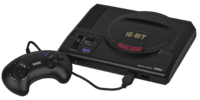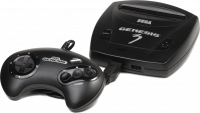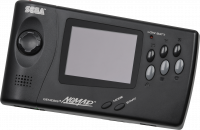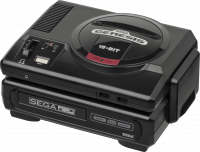Genesis:Genesis Mods Wiki: Difference between revisions
mNo edit summary |
No edit summary |
||
| Line 18: | Line 18: | ||
<div class="boxed-list center-float clip-corner"> | <div class="boxed-list center-float clip-corner"> | ||
=== General Information === | === General Information === | ||
* | * [[Genesis:Creating Game and Save Backups|Creating Game Backups]] | ||
* <s title="Placeholder - Guide not created yet!" class="visible"> [[Genesis:Playing Game Backups]] </s> | * <s title="Placeholder - Guide not created yet!" class="visible"> [[Genesis:Playing Game Backups]] </s> | ||
* | * [[Genesis:Creating Game and Save Backups|Creating Game Save Backups]] | ||
* [[Applying ROM Patches]] | * [[Applying ROM Patches]] | ||
* <s title="Placeholder - Guide not created yet!" class="visible"> [[Genesis:Homebrew Games List]] </s> | * <s title="Placeholder - Guide not created yet!" class="visible"> [[Genesis:Homebrew Games List]] </s> | ||
Revision as of 02:11, 7 November 2022
The Sega Genesis — known as the Mega Drive outside of North America — is a 16-bit console from the fourth generation of video game consoles. The console was first launched in Japan on October 29, 1988 followed by North America (August 14, 1989) and Europe (September 1990). It offers backwards compatibility with the Sega Master System library through the Power Base Converter add-on (or through a flash cart). The console has three main model revisions: the Model 1, Model 2, and Model 3; plus a portable version (Sega Genesis Nomad). Many third party consoles were later released later in the Genesis' lifespan and well after it.
CD game support was supported with two models of the Sega CD add-on, two combination models (Wondermega and X'Eye) and one semi-portable combination model (CDX/Multi-Mega). 32-bit game support was added with the Sega 32X add-on in 1994. Online play was also supported with some titles using the XBAND service in North America or the Mega Modem (Sega Meganet/Net Work System service) in Japan.
Despite massively underperforming in Japan due to heavy competition from NEC's PC Engine and both Nintendo's Famicom and Super Famicom, the Genesis was Sega's most successful console outside Japan, becoming a massive hit in most of the world and leaving behind a massive legacy as one of the most popular and fondly remembered video game consoles of all time.
Technical Information
Audio Mods
- Genesis:Triple Bypass Mod
Genesis:Audio BypassGenesis:Audio Chip NotesGenesis:Audio Chip ReplacementsGenesis:Digital Audio (SPDIF) ModGenesis:Crystal Clear Audio Mod (CCAM)Genesis:Adding Rear Stereo Audio Port (Model 1)Genesis:Audio Circuit Mod (Model 2)Genesis:Stereo Audio Mod (Model 3)- Genesis:Restoring CD Audio (Model 3)
Repair Guides
Genesis:No Power (Power LED OFF)Genesis:No Display (Power LED ON)- Game Cartridge / Connector Cleaning
- Genesis:Repair High Failure Rate Tengen Games
Genesis:32X on Model 1 Genesis Issues- 32X High Pitch Squealing
- Genesis:Replacing Capacitors
Genesis:Fuse Replacement (Sega CD)Genesis:Belt Replacement (Sega CD)Genesis:Ribbon Cable Replacement (Sega 32X)
Nomad







